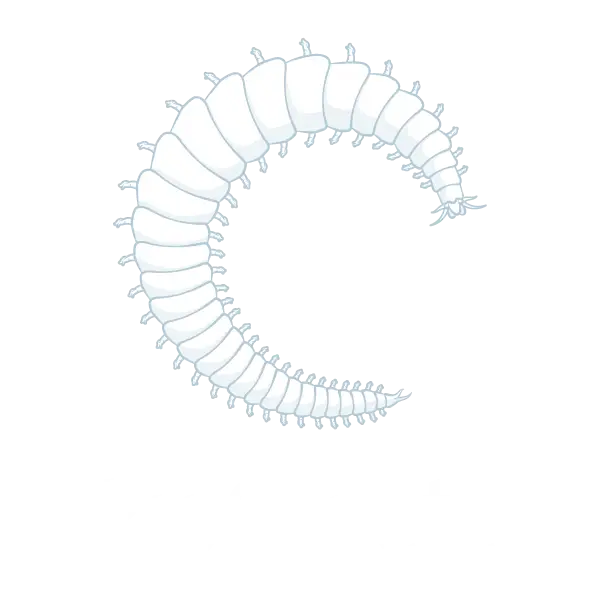Alternative Protein Sources for Fish Feed
The Polychaete solution: the new gold standard
The future of marine nutrition
In a time where the global population turns to aquaculture for healthy, nutritious food, we have an excellent opportunity to look ahead. We can start by developing smart, new, sustainable feed solutions. Using Polychaete as a nutritious protein base for marine feed will benefit both the industry and seafood lovers around the world.
Sourcing nutritious feed ingredients today is a challenging task, but with the right attitude and an open mind towards new solutions, our industry can look forward to a bright future.
Fishmeal
The aquaculture feed industry is being challenged by seafood buyers when it comes to environmental sustainability. A lot of the attention is being directed towards the use of fishmeal.
From an environmental sustainability standpoint, the problem is the lack of proper regulations declaring what can and can’t be harvested. We need a functioning quota system that ensures sustainable harvest.
In addition, Some NGOs are calling for pelagic fish to be directly and exclusively sourced for human consumption. If, let us say, the Peruvian anchovy were to only be consumed by people, fish farms around the world would have protein problems right away.
Good retail standards
Many of the large mid- to high-range grocery retailers have turned their eyes toward sustainability, and have as a result defined ingredient proportion standards, making sure, for instance, that there is an upper limit of marine ingredients in the aquaculture feed used by their suppliers.
But as we know, marine animals benefit from marine nutrients. So whatever we feed our fish or shrimp, it should include some marine fatty acids and other nutrients coming from marine raw materials. With new (and better) regulations, the global production of fishmeal is going down. The total global annual production today lies somewhere between five and six million tonnes. The annual global production of fish oil is 800.000 tonnes. And that’s the upper sustainable limit for production of fish oil, if we go over, we start depleting our resources.
So with aquaculture, we have to start looking for smart alternatives.
What are the options?
Years ago, we had too much fish oil, people burned fish oil like bio diesel. More than 20 years ago when fish oil was introduced in the aquaculture industry, the oil used in salmon feed consisted of 100% fish oil. Today, the same pellets contain 25% fish oil and 75% rapeseed oil. So why not switch entirely to rapeseed oil? The answer is simple: Lack of marine nutrients and specific fatty acids.
There are other oils we can substitute for fish oil, but none of them are perfect: Palm oil contains some of the right nutrients for salmon and would together with rapseed oil make a good blend, but the production of palm oil has the unfortunate effect of deforesting nature reserves and possibly eradicating species of animals including the orangutan. Hence, the use of palm oil is seen as off-putting and often a deal breaker among some of the larger grocery retailers of the (at least western) world.
So the question is still what protein and oil sources we are going to use instead of fishmeal and fish oil. Fishmeal needs a protein replacement where fish oil needs a fatty acid replacement, but there are also a wide range of other nutrients that go into the feed equation. Possible replacement options could be insects, grain, different types of fermentation products, or oil beans such as soy, which has become increasingly popular. However, with soy, there are deforestation issues in South America and anti nutrition factors within the soy.
What we do have, though, are worms.
The polychaete solution
Worms, more specifically polychaetes, have all the necessary nutrients to form the basis of an exceptional aquaculture feed. This is well known and documented, but until recently the use of worms in aquaculture required harvesting worms in the wild, a practice that can both be dangerous for the workers, environmentally unfriendly, and spread diseases in fish and shrimp farms.
What we need to do, is to start farming polychaetes effectively. They represent a protein that is as good as – if not better than – fishmeal, and they can be farmed sustainably. Worms utilise bi-products from other industrial processes – and could also be farmed by cultivating algae in the worms’ own environment.
Polychaetes are tasty. There is a reason why we use worms at bait when we go fishing: Fish and shrimp love it, and the worms contain many of the the nutrients that a marine species needs.
At ProChaete we are determined to find ways to utilise the farmed polychaete’s immense potential in aquaculture. Our mission is to find smart, sustainable ways to produce protein. Producing nutrient-dense aquaculture feed sustainably will also speed up the farming process, and higher performing feed with higher protein retention makes the industry less wasteful and more environmentally friendly.
The future of food
By 2050, nine billion people will populate this earth. If we don’t start acting in a sustainable manner, we are going to deplete our own food supply. It’s as simple as that. What our industry can do, is to rethink the way we feed our aquacultures, so future generations can enjoy even more delicious seafood than we do today.
If you’re interested in testing our innovative protein in your feed, please don’t hesitate to get in touch. We look forward to assisting you in improving your feed.

